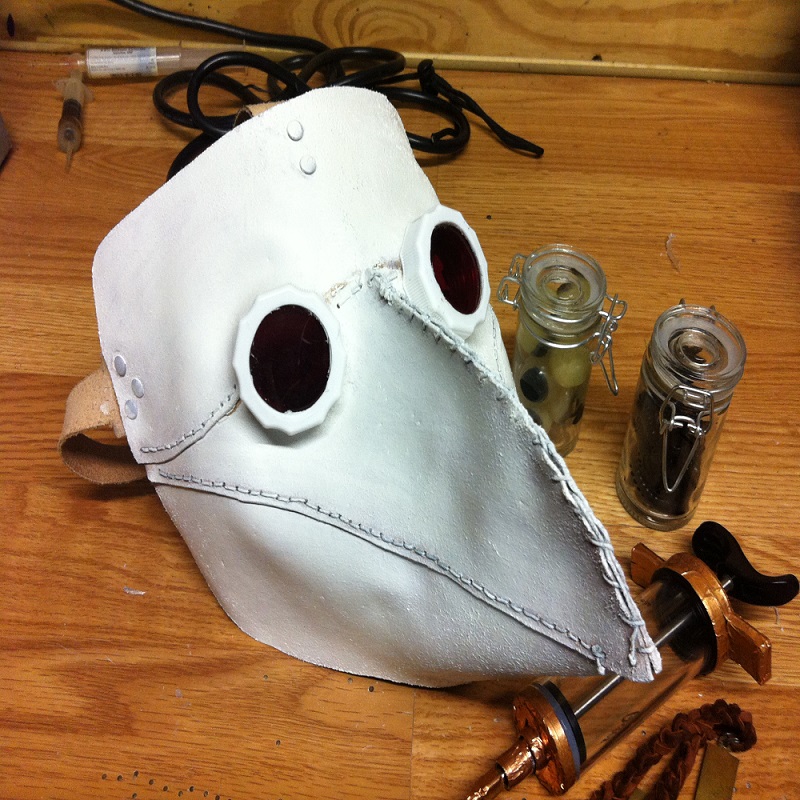In times where health and safety have become a priority, knowing how to make a mask at home can be an invaluable skill. It allows for creativity and customization while providing the necessary protection.
Gathering Your Materials
Choosing the Right Fabric
How to make a mask?The first step to making a mask is to select suitable fabric. The best material is tightly woven cotton as it provides a good balance of filtration and breath-ability. Fabrics like pillowcases or high-thread-count sheets are excellent choices. Avoid using materials that are too thick or not breathable, as these can be uncomfortable to use.
Essential Tools and Accessories
In addition to fabric, you’ll need elastic bands or ties for securing the mask to your face, a sewing kit or sewing machine, and a pattern for cutting out the mask shape. If elastic is not available or uncomfortable, consider using ribbon, string, or cloth strips that can be tied behind your head.

Cutting and Sewing the Mask
Preparing the Fabric
Before sewing, you should pre-wash the fabric in hot water. This ensures the material is clean and pre-shrunk. After drying, iron the fabric to make it easier to work with. Use a pattern to cut out the mask pieces. A typical pattern includes two identical rectangles that will form the front and back of your mask.
Sewing the Mask Together
After cutting your fabric to size, place the two pieces together with the “right”, or patterned sides facing each other. Sew along three edges, leaving the fourth edge open for turning the mask right side out and for inserting a filter, if desired. Once sewn, carefully cut the corners without cutting the stitches, turn the fabric right side out, then iron flat. This will form the shape of your mask.
Adding the Finishing Touches
Inserting Elastic or Ties
Cut two lengths of elastic or ties long enough to wrap around your ears or head. Pin these between the two layers of fabric on the left and right sides of the mask. Make sure to place the elastic or ties so that they are secured when you sew the open edge closed. This can be done after turning the edges inwards to form a clean finish.
Creating a Nose Bridge
To improve the fit of your mask, you can add a nose bridge. This can be done with a small strip of metal, such as a twist tie or a piece of a pipe cleaner, which is sewn into the top edge of the mask. This is optional but recommended, as it allows the mask to be more effectively secured around the nose, reducing the chance of particles entering or leaving the mask from the top.
In addition to serving a practical and protective purpose, homemade masks offer a canvas for creativity. They can be crafted in various patterns, colors, and sizes to suit individual preferences, making safety a more personalized and enjoyable practice. With the basics of mask-making mastered, anyone can design and produce their own masks, guaranteeing that personal expression and protection go hand in hand. Remember to adhere to all recommended safety guidelines for the use of homemade masks to ensure the highest level of protection.

Fine-Tuning for Comfort and Fit
Adjusting the Size for Different Wearers
Creating masks that fit properly is essential for comfort and effectiveness. It’s important to measure the face of the individual who will wear the mask to ensure it covers the nose, mouth, and chin without gaping or discomfort. If making masks for multiple people, consider creating different sizes for adults and children. Adjustable ties or elastic loops can also help accommodate different head sizes and shapes.
Ensuring Breathability and Filtration
Comfort also involves ensuring the wearer can breathe easily while using the mask. Adding multiple layers of fabric can increase filtration effectiveness but may also make breathing more difficult. To balance this, use breathable cotton materials and consider incorporating a pocket within the layers where a disposable filter can be inserted and replaced as needed. This approach maintains breathability while improving protection.
Care and Maintenance of Homemade Masks
Washing and Sanitizing Your Mask
how to make a mask? To keep your homemade mask clean and effective, regular washing is necessary. Masks should be washed after every use, using hot soapy water. They can be hand washed or machine washed with other laundry. After washing, thoroughly dry the mask, either in a dryer on high heat or by air drying in the sun.
Long-Term Considerations
With frequent use and washings, homemade masks will experience wear and tear. Inspect your masks regularly for any signs of damage such as thinning fabric, loose stitches, or frayed elastic/ties and repair or replace them as needed. It’s also wise to have multiple masks on hand to rotate between washings.
Making a mask is not just an act of craftsmanship, but one of social responsibility. By sewing and wearing your homemade face coverings, you’re contributing to the collective effort to safeguard health. With the right materials, a bit of sewing expertise, and careful maintenance, the masks you make will serve you well. As you become more practiced, you may even find joy in creating these essential accessories that have become part of our daily lives. Always keep in mind that while homemade masks can provide a level of protection, they should be used in combination with other preventive measures such as hand hygiene and physical distancing to combat any health risks.

Enhancing Mask Efficiency and Design
Experimenting with Different Patterns
Once you’ve mastered the basic mask design, experimenting with various patterns for a better fit or greater coverage can offer improved protection. Some designs incorporate pleats or darts that allow the mask to better conform to the contours of the face. 3D mask patterns can provide more breathing space, which may be more comfortable for some people during extended wear. Each pattern variation serves different preferences and needs, making it essential to find the right balance for individual wearers.
Incorporating Style and Personal Expression
Personal expression is vital, especially when it relates to something you wear. Masks do not have to be plain or purely functional; they can also reflect personality and style. Experiment with different colors, patterns, or themed fabrics to create unique and fashionable masks. Adding embellishments like embroidery, fabric paint, or iron-on patches can turn a simple mask into a statement piece. However, ensure that any added decorations do not compromise the mask’s integrity or its ability to be washed effectively.
Distributing Homemade Masks in the Community
Sharing Masks with Family and Friends
Once you become proficient in making masks, you might consider sharing them with family, friends, or community members who need them. Providing a homemade mask can be a thoughtful and practical gift. It’s also an excellent opportunity to educate others on the importance of mask-wearing for public health. When distributing masks, include instructions on how to wear, wash, and care for them properly.
Contributing to Local Organizations
Many local organizations, from hospitals to schools and charities, may accept donations of homemade masks, especially when there is a shortage of commercial options. Reach out to such organizations to see if they have guidelines or specifications for donated masks. Contributing your time and skills to create masks can make a significant impact in your community, offering protection to those who need it most.
Creating masks puts you at the heart of a unique blend of craft, care, and community service. By making masks, you’re not only crafting a protective barrier; you’re also weaving a thread of connection in your community, one mask at a time. As you continue to enhance your techniques, remember that the efforts to create comfortable, effective, and personalized masks contribute to a broader culture of health and well-being. Whether for personal use, sharing amongst your loved ones, or broadening your reach to the community, each mask made is a testament to the power of individual initiative in times of collective need.


